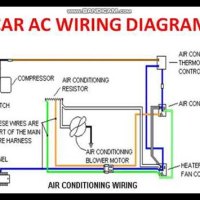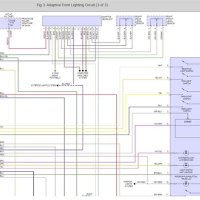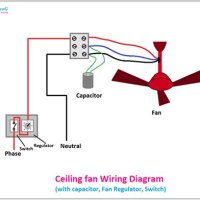Circuit diagrams, or schematics, are essential tools in the world of electrical engineering. They can be used to help identify, troubleshoot, and repair a wide variety of electrical and electronic systems. But beyond simply understanding how a circuit operates, it’s also important to learn how to solve circuit-related problems. Understanding circuit diagram example problems can help you gain a better understanding of the underlying principles of electrical engineering.
First and foremost, it's important to understand the basics of a circuit diagram. Circuit diagrams show the various components that make up an electrical or electronic system, such as resistors, capacitors, and transistors. They also illustrate the flow of current between the components and how they interact with each other. This is especially useful when troubleshooting or repairing an electrical system.
Once you understand the basics of a circuit diagram, you can begin learning how to solve circuit-related problems. In this case, it’s important to analyze the circuit diagram and identify any potential issues, such as short circuits, reversed polarity, or bad connections. Additionally, you should also look for areas of resistance and capacitance, as these can affect the performance of the circuit. After identifying potential issues, the next step is to determine the proper course of action. In some cases, this may involve making repairs or replacing parts. In other cases, it may require further investigation or adjustment of the circuit parameters.
Finally, it’s important to understand how to interpret the results of circuit diagram example problems. After identifying and solving an issue, it’s important to analyze the results and determine the implications of your actions. This helps to ensure that any repairs or adjustments are effective and correct. It also helps to improve your understanding of the principles behind electrical engineering and circuit diagrams.
Circuit diagrams are essential tools for electrical engineers, so it pays to understand the basics of how they work and how to solve circuit-related problems. First and foremost, it’s important to understand the basic features of a circuit diagram, such as its components and their interaction with each other. Next, it’s important to understand how to identify and fix potential issues. Finally, it’s important to interpret the results of circuit diagram example problems and use them to gain a better understanding of the underlying principles of electrical engineering. With a strong understanding of these concepts, you can become a more successful electrical engineer.
Series Parallel Circuit Analysis Practice Problems 2 Wisc Online Oer

Electric Circuit Diagrams Lesson For Kids Transcript Study Com

Series Parallel Circuit Examples Electrical Academia

Physics Tutorial Combination Circuits

Physics For Kids Resistors In Series And Parallel

Practice Problems To Become Familiar With Circuits And Circuit Diagrams Ppt
![]()
Circuit Example Of Efuse Ic Toshiba Electronic Devices Storage Corporation Asia English

Definition Circuit Problem Electric Physics University Of Wisconsin Green Bay

Doc Chapter 4 Arithmetic Functions Practice Problems Hamza Academia Edu
Parallel Circuit Analysis Practice Problems Part 1 Wisc Online Oer

Circuit Diagram And Its Components Explanation With Symbols
Solved For Each Of The Following Problems Draw Circuit Chegg Com

Eet 1150 Unit 9 Series Parallel Circuits

Example Problem Circuit With A Pair Of Parallel Resistors Diagram Full Size Png Seekpng

Physics Tutorial Combination Circuits

11 2 Ohm S Law Electric Circuits Siyavula

Voltage In A Series Circuit Formula Calculating Drops Lesson Transcript Study Com

Physics Tutorial Combination Circuits

Ohm S Law And Electric Circuit Diagram Practice Problems







